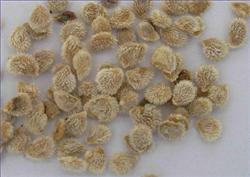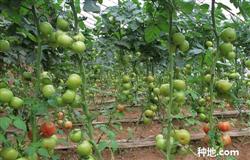How to Control Tomato seed Diseases and pests

How to control tomato seed diseases and pests? Please introduce the general diseases of tomato seeds as follows: (1) Tomato flower skin disease, which is a physiological disease, also called tendon rot or stripe rot or with rot, which mainly harms the fruit. Here are two common types. One is browning: when the diseased fruit is cut open, it can be found that the vascular bundles in the pericarp show tea-brown strip necrosis, hardening of the core or browning of the pulp, losing commercial value. One is the white variant: it mainly occurs in the period when the green ripe fruit turns red, and the diseased part has a waxy luster. When the diseased fruit is cut open, the pulp is in the shape of "chaff heart", the vascular bundle tissue of the pulp is dark brown, and the light vascular bundles turn brown and necrotic, and the browned parts do not turn red, the dull meat hardens, the quality is poor, and the food is tasteless. In the seriously diseased fruits, the vascular bundles of the pulp were all dark brown, some of the fruits were hollow, and the bright face was uneven in red and green. The vegetable farmer said that he belonged to the white variant. The general diseases of tomato seeds are as follows: (2) tomato gluten rot, which is also a physiological disease, the degree of damage depends on the variety (big fruit red tomato Wanda is not easy to be infected), sunshine hours, light intensity and the proportion of nitrogen, phosphorus and potassium in soil. The general prevention and control methods are as follows: (1) physical prevention and control of high temperature disinfection of soil: during the period of high temperature in three summers. After pulling seedlings in the spring protected field, first clean the fields and remove the diseased plants, diseased leaves and diseased roots from the field and bury them or burn them; apply 50,100kg lime and 1000 kg crushed rice straw (or wheat straw) per mu evenly on the surface; turn the soil 66 cm deep, super-high ridge 33 cm, irrigation, so that the ditch is always filled with water; covering plastic film and airtight shed for 7 days can control Fusarium wilt, blight, root-knot nematode and so on. (2) Biological control and disease prevention: for powdery mildew, anthrax and black spot, when individual spots first appear, you can spray 200 times of 2% agricultural antibiotic 120 or agricultural antibiotic B0-10 water agent, spray once every 6-7 days, even 4 times for 5 times, and can also treat gray mold and downy mildew. Bacterial diseases, such as angular spot, can be sprayed with 100-fold solution of Nongkang 751 water agent, once every 5-6 days, for 2-3 times. Pest control: when aphids occur, Guanmycin 200 times solution, add 0.01 neutral washing powder, or spray with 0.65% anisinin 200ml, plus 60-80kg water. Tea yellow mite can spray 20% compound liuyangmycin 800-1000 times solution, spray once every 6-7 days, 2-3 times in succession. (3) Pesticide control for the protected areas where the disease has occurred, pesticides with high efficiency and low residue can be selected for proper control. Downy mildew can be treated with 7% carbendazim dust or 80% Damei 45 wettable powder or 72% dew wettable powder; Botrytis cinerea uses 5% carbendazim dust or 50% carbendazim or 50% carbendazim 2 1000 times; corner spot uses 5% anti-bacterial dust or carbendazim; scab can use anti-scab dust or 40% Foxing EC; anthracnose uses 8% carbendazim dust or 80% anthrax Fumei wettable powder. Aphids and whiteflies can be controlled with aphids, whitefly dust or 10% imidacloprid wettable powder. Click to get more tomato planting techniques click to get more vegetable planting techniques
- Prev

How to choose Tomato seed
How to choose tomato seeds? How to deal with the seeds? Please introduce and guide tomato seed selection methods can refer to the following methods: 1. Seed selection should be based on the growing season, cultivation methods, market demand to select appropriate tomato varieties. Good tomato varieties should have the characteristics of disease resistance, high yield and high quality. ...
- Next

How to fertilize Tomato after planting
How to fertilize tomato after planting? As an important vegetable in daily life, tomato is not only delicious and delicious, but also rich in nutrition. However, due to the current defects in planting management, there are a variety of diseases in tomato during the growing period. ...
Related
- Where is it suitable to grow horseradish in China? it is expected to see the middle altitude horseradish in Alishan.
- How to prevent tomato virus disease reasonably? (Control methods included)
- Many people like to plant towel gourd on the balcony. What are the main points of this method and management?
- What crops can chili peppers be mixed with?
- Fertilization techniques and matters needing attention in Tomato
- What are the grafting techniques for peach seedlings in spring?
- Harm and control methods of root swelling disease of Chinese cabbage
- What are the pests of sweet potatoes? How to prevent and cure it?
- Symptoms, causes and Control methods of navel Rot in Tomato
- The cause of "Cucumber rotten bibcock" in Farmers' planting Cucumber and its Control Plan

